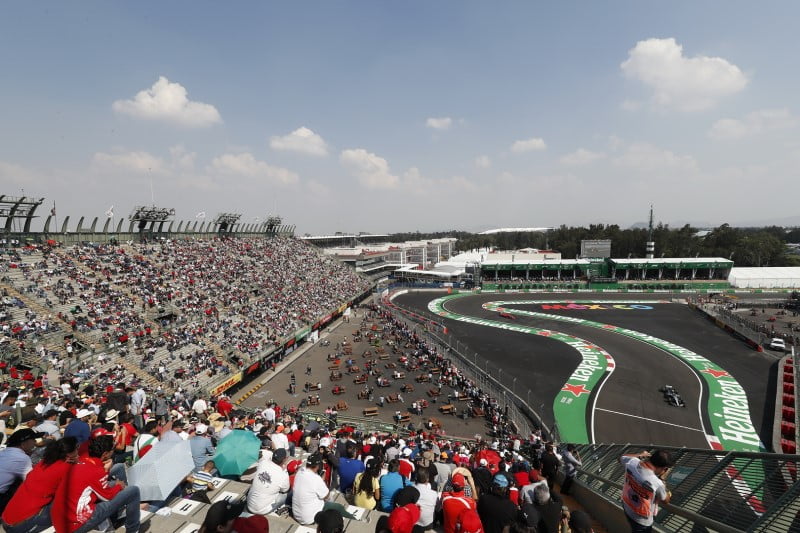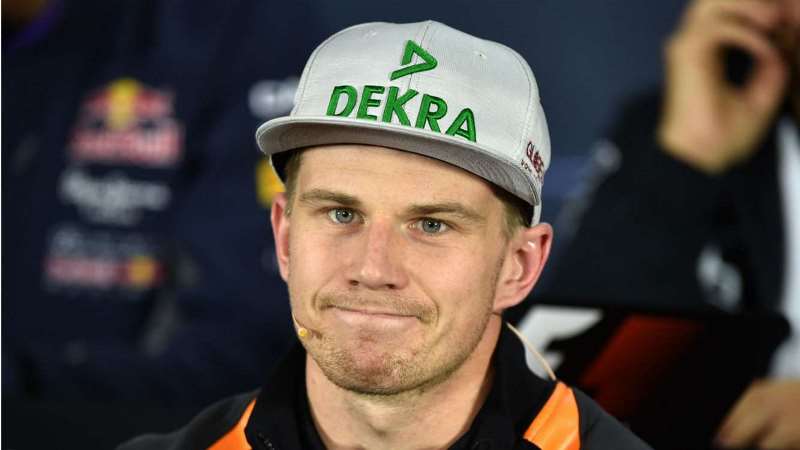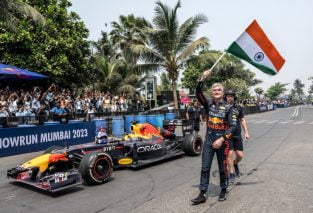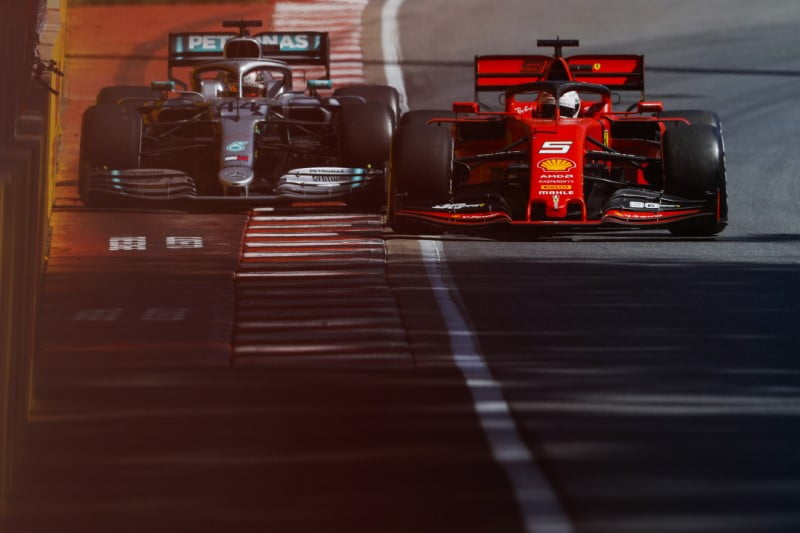‘Know Your F1 Circuit’ is a new series launched on my F1 blog. The posts under this series will be penned by Saumil Patel, an avid fan of the sport. You can follow the full series throughout the season by using the ‘Know Your F1 Circuit’ tag. This post focuses on the F1 facts, history & stats of the ‘Autódromo Hermanos Rodríguez’, the home of Formula 1 in Mexico.
The Autódromo Hermanos Rodríguez circuit is located in a public park like the historical “The Autodromo Nazionale di Monza” circuit. The circuit is situated in the Magdalena Mixhuca Sports City (Olympic Park used during the 1968 Summer Olympics) southeast of Mexico City. It is a boon for fans as it is at a travel friendly distance of 8km from Mexico City and 5km from Mexico City’s main airport, the Benito Juarez International Airport (MEX).
The city’s government owns the circuit and have franchised its operations to Corporación Interamericana de Entretenimiento (CIE) who also organize the NASCAR, Desafío Corona races and rent out the circuit to race organizers, automobile clubs and track amateurs.
Lewis Hamilton loves to serve the Mexican crowd his best donuts ?#MexicoGP ?? #F1 @MercedesAMGF1 pic.twitter.com/0YPYABoTDs
— Formula 1 (@F1) November 3, 2021
Did You Know? F1 History, Stats & Facts: Mexico GP
- It was originally named Magdalena Mixhuca after the city park in Mexico City where it is located.
- Like Barcelona, Montreal and Sochi, Autódromo Hermanos Rodríguez is situated on the site of a former Olympic venue.
- Jim Clark dominated the first Mexican Grand Prix in 1963 achieving a Grand Slam. Pole position, fastest lap (led every lap) and winning it by a record winning margin of 1m 41.1 seconds.
- John Surtees clinched the championship at this track in 1964. He became the only man to win world championships on two and four wheels (4 – 500cc & 3 – 350ccc motorcycle titles between 1956 and 1960).
- Graham Hill won his second driver’s crown in the 1968 Mexican Grand Prix.
- The 1970 Mexican Grand Prix was nearly cancelled because the 200,000 strong fans poised a serious crowd control situation.
- Mike Spence, Jackie Oliver and Michael Schumacher scored maiden podium finishes in 1965, 1968 and 1992.
- Jo Siffert and Clay Regazzoni captured their first pole positions in 1968 and 1970.
- The 1965 race saw the first win for Honda as a constructor in Formula 1, with little known American Richie Ginther scoring his only Formula 1 win.
- Gerhard Berger took his maiden grand prix win at the 1986 Mexican Grand Prix; it was also the first for Benetton.
- The final turn of the track, the latter half of the old Peraltada corner, was named in honor of Nigel Mansell in 2015.
- Ayrton Senna started his 100th race at the 1990 Mexican Grand Prix.
- Michael Schumacher claimed his first career podium finish here in 1992.
- Fernando Alonso celebrated his 250th start at the 2015 event.
- No driver has won more than two races in Mexico.
- Max Verstappen is the first driver to win the Mexican Grand Prix in consecutive years (2017 – 2018).
- Unusually, the podium isn’t located in the pit area at this track, but is instead at the stadium section of track, allowing the drivers to celebrate in front of 30,000 fans.
History of F1 in Mexico
Interestingly the circuit was designed by a student Óscar Fernández in 1953 as his thesis and was constructed in 1959.
The circuit was christened Magdalena Mixhuca but was renamed Autódromo Hermanos Rodríguez as a tribute to the two famous motorbike and motorsport Rodriguez brothers who lost their lives on track. Ricardo driving a Lotus 24 died during the practice session for the non-championship 1962 Mexican Grand Prix and Pedro died racing in a Ferrari during an Interserie sports car race in Nuremberg in 1971.
1962 – 1970:
Though the 1962 inaugural Formula One Grand Prix was a non-Championship race it had a good number of international participants. The following year the Mexican Grand Prix was added to the Formula 1 calendar up until 1970 when the racing conditions were declared as unsafe due to disruptive spectator congestion. The 1968 race was a prelude to the inevitable, unarmed policemen and track marshals had to be deployed to control the disobedient crowd who invaded the track. The chain of events during the 1970 race was the last straw for the FIA. An uncontrollable 200,000 strong crowd turned up to watch their local hero Pedro Rodríguez. The crowd was all over the place, squatting track side and darting across the track. Notwithstanding the passionate appeals from Pedro Rodríguez and Jackie Stewart the crowd remained difficult and unrelenting, delaying the race by an hour. During the race Jackie Stewart hit a dog on the track which prompted the boisterous crowd to throw bottles on the track making it a real safety hazard for the drivers.
1986 – 1992:
Sixteen years later, after incorporating many safety features and constructing a new, updated pit complex the circuit was ready for its second tryst with Formula 1. Two notable changes were made to the layout of the circuit. The incline at Peraltada’s banking was reduced and the length of the circuit was marginally reduced.
The 1986 race featured an indisposed Gerhard Berger (Austrian driver) driving a Benetton B186 winning his first race on a rough and undulating circuit.
The 1987 race was paused midway when Derek Warwick (British driver) collided severely exiting the Peraltada. Nelson Piquet won the race chasing down a thirty second lead his team mate Nigel Mansell had.
The crew is either in Mexico City already or on their way; it’s time to preview the #MexicoGP with @OconEsteban and @alo_oficial! #MexicoGP #F1ESTA pic.twitter.com/rOrPOjlKqm
— Alpine F1 Team (@AlpineF1Team) November 2, 2021
The 1990 race kept fans on the edge of their seats till the very end. A determined Alain Prost who started P13 cut through the field and tailed race leader Ayrton Senna. Unfortunately, Senna had a slow puncture and had to pit for a tyre change. By the time Senna pitted the tyre was completely shredded which resulted in suspension damage. Unable to continue, Senna had to retire. A spirited Gerhard Berger (Senna’s teammate) challenging Mansell for second place overtook Mansell entering the Moises Solana esses but Mansell regained his place in the same lap overtaking Berger from the outside of the Peraltada. Alain Prost and Nigel Mansell driving Ferrari F1-90s finished 1 – 2 on the podium. Gerhard Berger finished third driving a McLaren-Honda MP4/5.
By the end of 1991 the drivers and the FIA were critical of the bumpy circuit and demanded that the race organizers improve the circuit before the 1992 race.
Mexico City’s air pollution had peaked by February 1992 prompting the government to ban half its vehicles and equipment usage. Situated in a valley surrounded by mountains did not help ease the pollution. With the 1992 event scheduled for March, the Mexican Grand Prix committee was under tremendous pressure to complete the circuits’ improvements.
A few safety measures were executed, notably the incline at Peraltada’s banking was further reduced effectively making it slower but the bumps were largely unattended. During the practice session Nigel Mansell narrowly missed crashing whilst negotiating the bumpy Peraltada. Senna was less fortunate negotiating the pacey Esses, he hit a series of bumps which unsettled his car, lost control and crashed into a concrete wall.
A severely decayed bumpy track, driver safety hazards, air pollution and unstable population prompted Formula 1 to leave once again.
2015 – Current
By 2014, the interest in bringing Formula 1 back to Mexico was kindled by its two ascending stars, Esteban Gutiérrez and Sergio Pérez. Bernie Ecclestone signed a five year contract for the Mexican Grand Prix to be held at the Autódromo Hermanos Rodríguez and the first returning race was scheduled for the month of November.
To ensure that the circuit met all the current FIA safety requirements, extensive repair and modernization was undertaken along with a few layout changes. The responsibility was entrusted to ace circuit designer Hermann Tilke. Most of the circuit was demolished, new foundations were added and the circuit was resurfaced.
A new spectator stand was constructed around the lap, the new pit and paddock facilities were relocated at a further distance from the circuit with a wider pit lane. The new layout connected the esses with a short straight after negotiating three corners (1 – 2 – 3). The fearsome La Peraltada was reconfigured and completely tamed. The banking was flattened and the corner was cut in half, rerouting the circuit through the Foro Sol stadium complex beginning of turn 12.
The 2015 and 2016 races were dominated by the Mercedes drivers Nico Rosberg and Lewis Hamilton. (2015 – Nico won, Hamilton second & 2016 – Hamilton won, Nico second). 2017 saw Verstappen win with Bottas second, Hamilton slipped six positions to P9 after Vettel made contact with his rear right tyre.
In 2018, Verstappen won the race with both Ferraris sharing the podium (Vettel second, Räikkönen third). Most importantly Hamilton finished fourth and claimed the 2018 World Drivers’ Championship with two races to spare. 2019 was a forgettable year for Verstappen. After setting the fastest qualifying lap time he was handed a three place grid penalty for not slowing down during the yellow flag period.
During the first lap he made minor contact with Hamilton on turn 2 causing both cars onto the runoff, both lost positions. On lap four, at corner 13, Verstappen’s right rear tyre made contact with Bottas’ car causing a puncture. By the time he could pit, he was on three tyres. He rejoined the race last placed – 30 seconds behind Grosjean but went on to finish sixth. Hamilton won the race with Bottas finishing third and Vettel placed second.
Wondering if this pattern is going to apply this year as well. What’s your take?#F1 #MaxVerstappen #MercedesF1 pic.twitter.com/Fnoz5neF8f
— F1 StatsGuru (@f1statsguru) October 27, 2021
Circuit Details: Autódromo Hermanos Rodríguez
At an elevation of 2230 meters above sea-level, Autódromo Hermanos Rodríguez is the highest altitude circuit on the Formula 1 calendar. At such a high altitude the air is starved of 25% of its normal sea-level density which considerably affects the performance of the cars.
It is a slightly low grip, reasonably pacey and technical circuit with two straights and 17 corners. The now halved and watered down Peraltada (corner 17) is a timid shadow of itself. Exiting the Peraltada into the long (1.2km) start / finish straight cars regularly nudge 360 km/hr.
Corner 1 is a hard braking 90⁰ right hander. Exiting the fast straight, braking into corner 4, a 90⁰ left hander goes into corner 5, a sharp right hander. Corner 6 is a slow tight right hander. Corners 7 to 11 are fast flowing esses (corner 9 is a 250 km/h. – 4.1G corner). Corner 12 is a hard braking 90⁰ right hander going into corner 13 a tight left hander. Corner 16 is a 90⁰ right hander.
- Inaugurated: 1962
- Circuit Certification: Grade 1
- Circuit Classification: Permanent Circuit
- Circuit Direction: Clockwise
- Pole Position: Left-hand side of the track
- Circuit Length: 4.403 km
- Race Distance: 305.354 km
- No. of Laps: 71
- Distance To Turn One: 890 m
- Longest Flat-Out: 1200 m
- Number of Corners: 17 – (10 right & 7 left)
- DRS Zones: 3 – (Between Corners 17 to 1, 3 to 4 & 11 to 12)
- Track Deviation: 2.8 m
- Downforce level: High
- Gear Changes Per Lap: *52
- Fuel Use Per Lap: *1.43 kg
- Pit Lane Time Loss: *22s
- Fastest Race Lap Record: 1:18.741 Valtteri Bottas, 2018 – Mercedes F1 W09
- Fastest Lap Record: 1:14.758 Max Verstappen, 2019 – Red Bull Racing RB15
- Most wins – Drivers:
- Jim Clark – 3 (1962#, 1963 & 1967)
- Alain Prost – 2 (1988, 1990)
- Nigel Mansell – 2 (1987, 1992)
- Max Verstappen – 2 (2017, 2018)
- Lewis Hamilton – 2 (2016, 2019)
- Most wins – Constructors:
- Lotus – 4 (1962#, 1963, 1967, 1968)
- McLaren – 3 (1969, 1988, 1989)
- Williams – 3 (1987, 1991, 1992)
- Mercedes – 3 (2015, 2016, 2019)
* estimated
# Not part of the Formula 1 World Championship.
Challenges For F1 Teams & Drivers: Mexico GP
It’s all about the high altitude which makes this one of the most demanding circuits on the Formula 1 calendar.
Not only for cars and drivers but also for engineers too. The low density of oxygen in the air warrants major setup configuration changes which push the science of aerodynamics and mechanical engineering to the edge of its limits.
Teams will without doubt setup the cars with maximum aerodynamic downforce, finely balancing the straight-line speed and cornering traction on a track which is slightly low on grip. The turbochargers will be pushed to the brink of its limits trying to compress more air flow in the rarefied air altitude. They will spin at a much higher RPM (regulation limit of MGU-H on the same shaft is 125,000 – 25% higher than at sea level) to increase the air flow, so air intakes will have to be opened up.
Brake degradation is another aspect teams will have to carefully consider. Drivers will be full throttle for 15s (peak top speeds 354km/h) and hard braking for 20 seconds per lap (at turn one cars decelerate 250km/h in 70 meters). Brake ducts will have to be opened up much more than normal to maintain optimum operating temperatures.
Saumil Patel is an avid fan of Formula 1. He aims to take you deeper into the sport by uncovering the lesser read.














